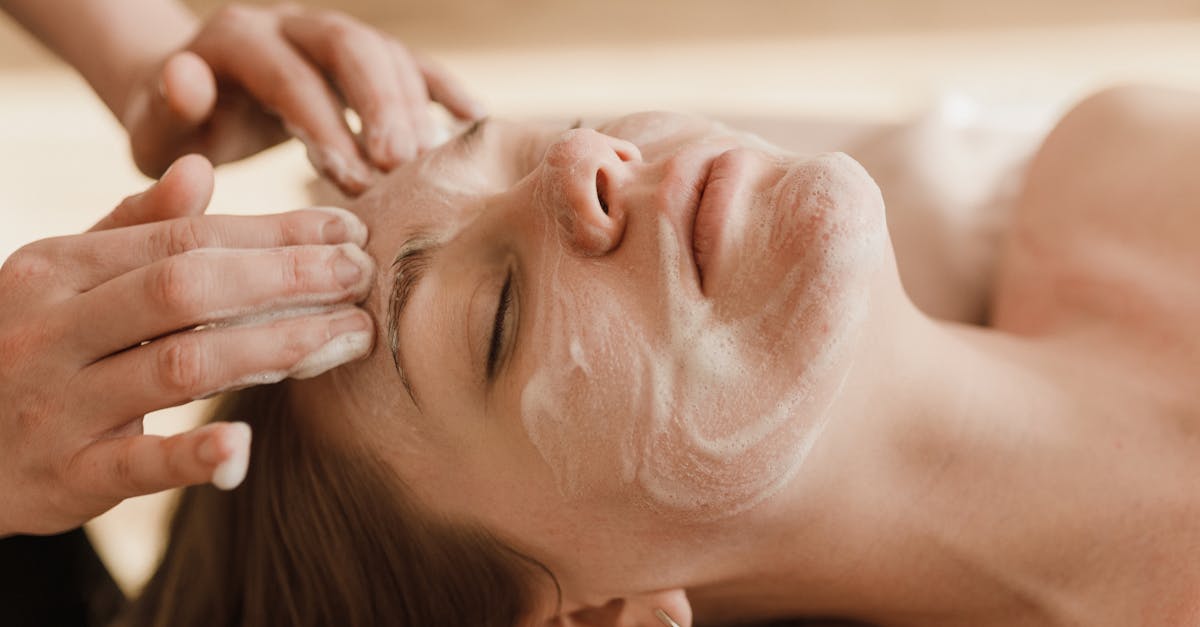In Short, refractory headaches are a chronic condition characterized by persistent and challenging headache symptoms that do not respond to conventional therapies. Recent therapeutic advances, including novel medications and neuromodulation techniques, offer promising alternatives for effective management. These innovations aim to reduce headache days and provide targeted relief for those suffering from these debilitating conditions. Accessible through specialized clinics, these treatments empower individuals with personalized solutions while minimizing side effects. By enhancing the scope of treatment options, the latest developments represent a significant leap forward in addressing the complexities of refractory headache management. |
The realm of refractory headaches has seen remarkable therapeutic advances aimed at providing relief for individuals who suffer from intractable pain. Traditional treatments often fall short, worsening the need for innovative methods. Recent studies emphasize the importance of neuromodulation techniques, which are being heralded as a revolutionary approach. Devices designed for acute and preventive measures, such as CGRP antagonists and lasmiditan, are showing promising results in terms of both efficacy and safety. Moreover, the advent of drugs like Pfizer’s ZAVZPRET™ nasal spray demonstrates a significant shift towards tailored treatment options that prioritize individual patient needs.

At Pulse Align, we introduce an innovative, non-invasive approach to restoring your body’s natural balance and posture through gentle, imperceptible pulses. This innovative method can significantly help reduce muscle and joint tension, facilitating your body’s journey to improved overall well-being.
Natural Recalibration for Enhanced Comfort
Rather than targeting specific discomforts, Pulse Align focuses on your body’s innate ability to recalibrate itself naturally. By emphasizing muscle tone symmetry and improved posture, clients often experience a natural reduction in common discomforts. This approach prioritizes holistic wellness to enhance your body’s functionality.
A Personalized Approach to Well-Being
Our clients have shared positive experiences with noticeable improvements in their neck and back tension, postural balance, and overall well-being, thanks to our personalized methodologies. We believe that enhancing your body’s natural processes leads to a welcoming pathway to increased comfort, fostering a more vibrant lifestyle. Discover testimonials from those who have benefitted from our non-invasive services, valuing the gentle encouragement that Pulse Align offers.
Join the Pulse Align Community
We invite you to explore Pulse Align as part of your family’s wellness journey. With convenient locations in La Prairie, Mont-Royal, Terrebonne, and more, it’s easier than ever to experience our holistic approach. Visit our website to learn more, find various locations, and book a consultation for yourself or your loved ones. Remember, Pulse Align complements but does not replace medical care; your health journey is important, and we support it alongside your healthcare team.
Embrace this safe, non-invasive, and family-friendly approach with Pulse Align and start your path towards enhanced muscle tone symmetry and improved posture today!
- Neuromodulation Techniques: Emerging as effective solutions for chronic headache management.
- CGRP Antagonists: A novel class of medications targeting migraine prevention.
- Lasmiditan: A new option for acute migraine treatment.
- Remote Neuromodulation: Beneficial for reducing migraine days.
- ZAVZPRET™ (zavegepant): A breakthrough nasal spray for faster migraine relief.
- Cluster Headache Management: Innovative approaches aiming to address limitations.
- Precision Medicine: Tailoring treatments based on individual patient profiles.
- Multimodal Treatments: Combining therapies for enhanced effectiveness.
- Device Innovations: New technologies offering relief from persistent headaches.
- Research Advances: Continuous exploration into refractory migraine treatments.

Understanding Refractory Headaches
Refractory headaches pose unique challenges for those who suffer from chronic pain. With traditional treatments often falling short, new therapeutic advances are critical for this patient population. Doctors and researchers are exploring innovative treatment options that not only promise to relieve acute migraine episodes but also enhance preventive strategies. This article reviews these emerging therapies and their implications for managing refractory headaches.
Innovative Treatment Breakthroughs
The landscape of headache management has shifted markedly with the introduction of novel therapies aimed at individuals suffering from refractory headaches. A recent consensus statement highlights the need for tailored approaches to combat the complexities associated with chronic migraines. Among the more notable advancements are CGRP antagonists and treatments like lasmiditan, which have opened new avenues for relief.
Galcanezumab and Erenumab
Among the CGRP antagonists, galcanezumab and erenumab have gained substantial traction. Designed for the prevention of migraines, these treatments work by blocking the activity of calcitonin gene-related peptide (CGRP), which is implicated in the onset of headache attacks. Clinical trials have shown that these drugs significantly reduce the frequency of migraine days for many patients unable to find relief through traditional therapies.
The Role of Neuromodulation
Neuromodulation is emerging as a revolutionary approach in the management of refractory headaches. Devices that apply electrical impulses to targeted nerve pathways can provide both preventive benefits and acute relief. Studies suggest that this method can effectively diminish the severity and frequency of headaches for those who have not responded to pharmacological interventions.
Remote Neuromodulation Techniques
Recent advancements in technology have ushered in the era of remote neuromodulation, which enables patients to manage their symptoms outside the clinical setting. Devices that allow individuals to stimulate nerve pathways at home are gaining favor, with evidence pointing to their efficacy in decreasing migraine day occurrences while also alleviating acute pain.
Combination Therapies
Combination therapies represent another strategic approach to tackle refractory headaches. Utilizing multiple treatment modalities, such as pharmacological agents alongside neuromodulating devices or behavioral therapies, has shown promise in increasing overall effectiveness. Healthcare providers are encouraged to develop individualized treatment plans that account for the unique needs of each patient.
Patient-Centric Strategies
Incorporating a model of care that emphasizes patient autonomy is central to managing refractory headaches. Empowering patients with knowledge about their treatment options, encouraging them to participate in clinical decisions, and promoting communication with healthcare professionals fosters a supportive environment, ultimately leading to improved outcomes.
Looking Ahead: The Future of Headache Treatment
headache medicine continues to evolve, it becomes increasingly clear that a multifaceted approach is essential. The latest research not only aims to introduce safe and effective therapies but also emphasizes the importance of treating patients holistically. Understanding how physiological, emotional, and environmental factors intertwine is vital in developing comprehensive treatment frameworks.
In conclusion, the advances in treating refractory headaches provide hope for many afflicted by persistent pain. The integration of innovative therapies positioned within a holistic approach, as advocated by the principles of Pulse Align, is instrumental in fostering neuromuscular health and system recalibration. As we stand on the cusp of these developments, empowering both patients and practitioners becomes crucial in shaping the future landscape of headache management.
| Therapeutic Approach | Description |
| CGRP Antagonists | Target calcitonin gene-related peptide to reduce migraine frequency. |
| Lasmiditan | A novel medication for acute migraine treatment that avoids causing vasoconstriction. |
| Neuromodulating Devices | Utilize electrical stimulation to reduce headache severity and frequency. |
| Pfizer’s ZAVZPRET™ | Intranasal spray providing rapid relief for acute migraines. |
| Remote Neuromodulation | Potential for both prevention and acute management of migraines. |
| New Guidelines | Aim to enhance patient outcomes through tailored treatment plans. |
| Therapeutic Combinations | Combining different classes of drugs for enhanced efficacy. |

Embracing Wellness: Client Experiences with Refractory Headaches Treatment
Clients at Pulse Align have discovered transformative relief for their refractory headaches through innovative therapeutic advances. Many have shared how this unique approach has allowed them to tap into the body’s inherent ability to recalibrate and restore balance. The testimonies highlight not just the physical relief but also an overall improvement in wellness, enabling them to navigate life with greater ease and comfort.
In locations like Mont-Royal, clients have reported significant progress in managing their headaches by integrating Pulse Align’s methods into their lifestyle. One client expressed, “Since starting my journey with Pulse Align, I’ve noticed a natural shift in how my body responds to headaches. It’s more than just a treatment; it feels like I’m nurturing my well-being.”
The experience in Terrebonne reflects a growing appreciation for holistic recovery methods. Many clients have commented on feeling empowered as they regain control over their health. “The support I’ve received has helped me understand my body better,” shared another client. “It’s incredible how addressing the root causes of my headaches has led to improvements I never expected.”
In regions such as Chicoutimi and Sainte-Marie, the integration of these therapeutic practices into community health programs fosters a supportive environment for those suffering from chronic headaches. “Connecting with others who understand what I’m going through has been invaluable,” a client from Chicoutimi noted. “It’s comforting to know that I’m not alone on this journey.”
Clients from places like Châteauguay and Saint-Jérôme echo similar sentiments. They appreciate how Pulse Align collaborates with healthcare teams, ensuring a comprehensive approach to their wellness journey. “I feel like I have a team supporting me, which makes all the difference,” one remarked. This holistic involvement lays the groundwork for sustained progress, allowing individuals to thrive.
With growing interest in these unique methods, clients in Deux-Montagnes and Les Escoumins are encouraged to explore the benefits of Pulse Align’s approach. The alignment of body and mind opens doors to new possibilities in managing refractory headaches effectively. The focus on natural healing is resonating deeply within the community, bringing about a sense of hope and renewal.
If you are in the vicinity of Panama City and seeking relief from chronic headaches, visiting Pulse Align can provide you with the tailored support to help navigate your wellness journey. Clients repeatedly emphasize the importance of personalized care and community involvement in achieving lasting results.
To connect with clients in your area and further explore how Pulse Align can assist you, visit Our Clinics for more information. Join the growing movement towards holistic health and experience the revitalizing journey towards balance and wellness.
Refractory headaches represent a significant challenge in the realm of chronic pain management, as they often resist standard treatment protocols, leading to considerable distress for those affected. These headaches can be both debilitating and persistent, proving to be a mental and physical burden. Recent advances in therapeutic interventions offer hope for individuals seeking relief from their symptoms.
Central to these advances is the understanding of the multifaceted nature of refractory headaches. This condition often overlaps with various research fields, including neurology, pain management, and innovative therapeutic techniques. At the forefront of this integrative approach is Dr. Sylvain Desforges, a respected expert in osteopathy, naturopathy, and manual medicine. He serves as the founding president of TAGMED clinics and the ACMA association, where he actively promotes health and wellness through evidence-based practices.
Dr. Desforges has dedicated his career to exploring innovative methods of treating chronic pain, recognizing the necessity of personalizing treatment plans for each patient. Utilizing advanced technologies such as spinal decompression, laser therapy, and shockwave therapy, he aims to optimize his patients’ experiences and outcomes. His commitment to blending traditional practices with modern technology positions him as a leader in the field of refractory headache treatment.
The complexity of refractory headaches often means that their symptoms can manifest in various ways, impacting individuals differently. Dr. Desforges advocates for a holistic approach to treatment, focusing not only on alleviating pain but also on addressing the underlying causes of headaches. This comprehensive strategy allows for a more effective management of symptoms and can significantly enhance a patient’s quality of life.
In recent years, the field of headache management has been further enriched by novel treatment options. This includes the introduction of neuromodulation therapies, which may alter nerve activity through targeted stimulation. Such innovations expand the spectrum of available treatments and offer new avenues for those who have previously found no relief. The integration of these therapies into Dr. Desforges’ practice exemplifies a forward-thinking approach to chronic pain management.
Additionally, the ongoing research into headache pathology provides valuable insights into their mechanisms. With these advancements, healthcare professionals are better equipped to tackle the challenges posed by refractory headaches. The emergence of new guidelines and therapeutic frameworks signifies a significant shift in how refractory headaches are understood and treated, prioritizing patient-centered solutions.
Dr. Desforges’ practices at TAGMED clinics in Montréal, Terrebonne, and Mont-Royal reflect an unwavering dedication to advancing headache care. His focus on research and patient education fosters a greater understanding of refractory headaches within the community, empowering patients to explore emerging treatment strategies that might lead to effective symptom management.
The path to effective treatment of refractory headaches is evolving, and contributions from experts like Dr. Sylvain Desforges play a vital role in this revolution. As therapies continue to develop, patients are offered renewed hope and strategies to reclaim their lives from the burden of chronic headaches.
Mechanism of Action
The neurovertebral decompression technology offered by TAGMED operates by applying a controlled and progressive traction force to the spine. This innovative approach works by increasing the space between the vertebrae, thereby reducing the pressure on the intervertebral discs and nerve roots. As a result, it fosters improved fluid circulation within the affected area. This process is essential for alleviating inflammation and ultimately relieving pain.
Specific Benefits
This non-invasive method effectively addresses chronic pain and associated symptoms related to conditions such as disc herniation, disc bulging, and moderate to severe spinal or foraminal stenosis, as discussed in Refractory Headaches: New Therapeutic Advances. By reducing the pressure exerted on neural structures and optimizing fluid circulation around the discs, TAGMED’s technology promotes faster recovery and significantly enhances the quality of life for a broad spectrum of patients.
Comparison with Other Treatments
When comparing TAGMED’s neurovertebral decompression technology to other common therapeutic approaches—such as analgesics, corticosteroid injections, surgery, or traditional physical therapy—it becomes evident that neurovertebral decompression offers unique advantages. Notably, this technique does not require invasive interventions, which mitigates the risks associated with medication and provides a generally quicker recovery time.
Case Studies and Testimonials
There are numerous instances of patients who have experienced significant relief from chronic pain symptoms via TAGMED’s neurovertebral decompression. For example, one patient reported long-lasting pain reduction and the ability to return to everyday activities much sooner than expected. Their testimonial reflects not only a diminished reliance on pharmacological treatments but also a notable improvement in their overall quality of life.
In conclusion, the neurovertebral decompression technology from TAGMED stands out as an innovative and effective treatment option for individuals struggling with chronic pain and related conditions. Its non-invasive nature and proven efficacy make it a valuable addition to the therapeutic landscape.
The complexity of refractory headaches> continues to challenge both patients and healthcare providers alike. These persistent headaches, often resistant to traditional treatments, have prompted a need for innovative therapeutic approaches. Recent advancements in the field signal a shift in understanding and managing these debilitating conditions.
New treatment options have emerged, demonstrating promising potential for those afflicted by severe headaches. Medications such as Ubrelvy and Qulipta are at the forefront of acute migraine treatment and prevention, respectively. Moreover, dual-action medications like Nurtec, which serve both roles, are revolutionizing patient care. The emergence of these therapies is crucial in addressing the unique challenges presented by refractory migraines.
Additionally, interventions such as neuromodulation have gained traction as effective tools in headache management. Techniques involving remote neuromodulation can significantly reduce migraine days while also providing necessary acute relief. This innovative approach represents a paradigm shift, focusing on the specific neurological triggers of migraines rather than merely addressing symptoms.
Recent clinical consensus statements underline the importance of individualized treatment plans. Emphasizing a personalized approach increases the chances of positive outcomes for patients dealing with refractory chronic migraine. Ongoing research continues to explore the efficacy of new medications, such as the CGPR antagonists and innovative delivery methods, including ZAVZPRET™, a nasal spray option that could enhance accessibility and ease of use for those suffering from severe headaches.
With the introduction of these novel approaches and treatments, the outlook for individuals grappling with refractory headaches is gradually becoming more optimistic. As the landscape of headache treatment continues to evolve, the need for awareness and education grows ever more critical.

Do you suffer from a chronic condition that responds little or not at all to conservative treatments?
Pulse Align is an innovative wellness service designed to help individuals restore their body’s natural balance and improve posture through gentle, imperceptible stimulation. This non-invasive method uniquely supports the body’s recalibration process, which can lead to the alleviation of discomfort and tension arising from everyday activities. By focusing on optimizing muscle tone and symmetry, Pulse Align addresses the prevalent issues of imbalance in a natural, supportive environment.
What sets Pulse Align apart is its commitment to enhancing the body’s self-restoring capabilities rather than directly targeting discomfort or specific conditions. Our approach encourages the body to recalibrate itself, leading to remarkable improvements in overall comfort and posture. Clients often report feeling a renewed sense of well-being as their bodies align with their natural state, resulting in profound shifts in how they carry themselves throughout their daily routines.
At Pulse Align, we pride ourselves on a personalized approach that takes into account each client’s unique experiences and needs. Testimonials from countless individuals reveal significant enhancements in neck and back tension, as well as improvements in overall wellness. The positive feedback we receive showcases the vibrant community that finds solace and rejuvenation through our services, emphasizing how gentle encouragement can lead to extraordinary changes without medical interventions.
We invite you to explore the possibilities awaiting you at Pulse Align. Visit our website to learn more about our innovative approach, find nearby locations in cities such as La Prairie, Mont-Royal, Terrebonne, and book a consultation for yourself or your family. Our services are designed to complement and work alongside your existing healthcare routine, ensuring that your journey towards enhanced wellness is a collaborative effort. Remember, Pulse Align is a safe, family-friendly choice, valued for its holistic focus on restoring balance, while never replacing necessary medical care. To book an appointment online, visit our website: Pulse Align.
Frequently Asked Questions
Headache and Migraine
Does cognitive-behavioral therapy help?
Yes, it teaches stress and pain management techniques, reducing migraine frequency and intensity.
Is stress a trigger?
Yes, physical or emotional stress is among the most common headache and migraine triggers.
Can migraines disappear with age?
In some individuals, migraines become less frequent and less intense over time.
Do children get migraines?
Yes, children can experience migraines, often shorter but just as painful.
Are preventive medications available?
Yes, beta-blockers, antidepressants, anti-epileptics, or monoclonal antibodies can prevent or reduce migraine frequency.
Can identifying triggers reduce migraines?
Yes, keeping a headache diary helps identify triggers so you can avoid them.
Are blue-light filtering screens useful?
They reduce eye strain, potentially lowering headache risk.
Does exercise help regulate migraines?
Moderate, regular exercise reduces stress and improves circulation, potentially lowering migraine frequency.
Does caffeine relieve or worsen migraines?
Caffeine can relieve a migraine briefly, but excessive or irregular intake may worsen them.
How to differentiate a migraine from a tension headache?
Tension headaches cause diffuse, moderate pressure. Migraines are often more severe, pulsating, one-sided, and accompanied by associated symptoms.
Ethan Dubois is dedicated to shining a light on the hidden struggles of chronic headaches. As a Headache Awareness Advocate at Pulse Align, he combines compassionate storytelling with cutting-edge research to bring clarity, comfort, and hope to those affected. Ethan’s mission is to empower readers with knowledge, break through stigma, and foster a supportive community where every voice is heard. When he’s not crafting insightful articles, Ethan can be found exploring the latest wellness trends, sharing practical coping strategies, or simply lending a listening ear to those in need. His heartfelt approach and unwavering commitment to awareness make him a trusted ally for anyone navigating life with headaches.




